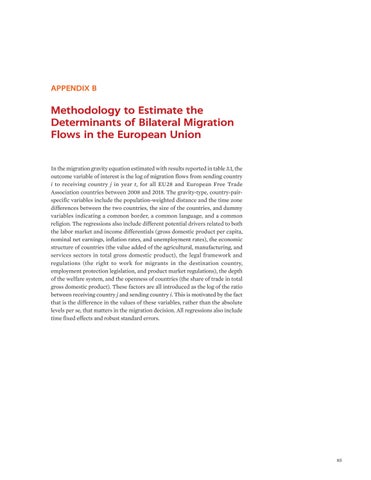APPENDIX B
Methodology to Estimate the Determinants of Bilateral Migration Flows in the European Union In the migration gravity equation estimated with results reported in table 3.1, the outcome variable of interest is the log of migration flows from sending country i to receiving country j in year t, for all EU28 and European Free Trade Association countries between 2008 and 2018. The gravity-type, country-pairspecific variables include the population-weighted distance and the time zone differences between the two countries, the size of the countries, and dummy variables indicating a common border, a common language, and a common religion. The regressions also include different potential drivers related to both the labor market and income differentials (gross domestic product per capita, nominal net earnings, inflation rates, and unemployment rates), the economic structure of countries (the value added of the agricultural, manufacturing, and services sectors in total gross domestic product), the legal framework and regulations (the right to work for migrants in the destination country, employment protection legislation, and product market regulations), the depth of the welfare system, and the openness of countries (the share of trade in total gross domestic product). These factors are all introduced as the log of the ratio between receiving country j and sending country i. This is motivated by the fact that is the difference in the values of these variables, rather than the absolute levels per se, that matters in the migration decision. All regressions also include time fixed effects and robust standard errors.
85

